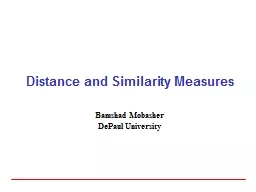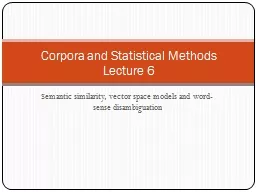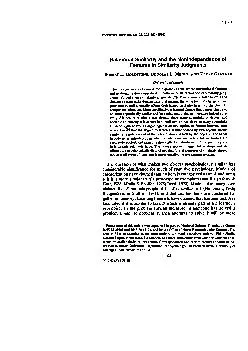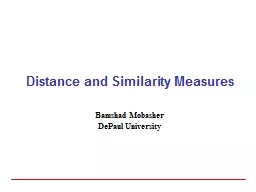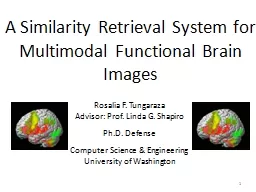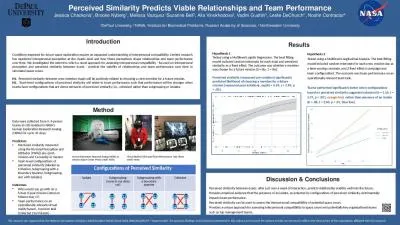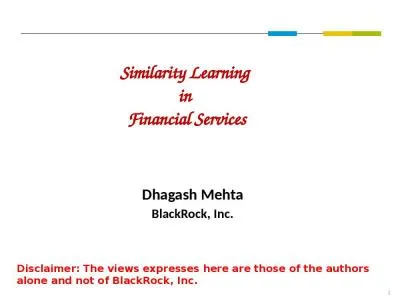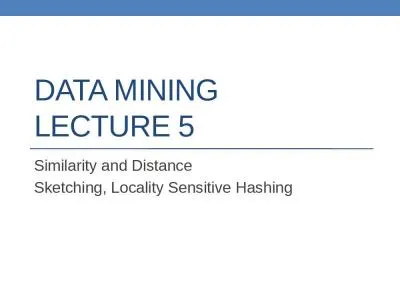PPT-Chapter 6 - Basic Similarity Topics
Author : luanne-stotts | Published Date : 2017-06-16
Casebased reasoning Introduction Common term in everyday language where two objects usually are considered similar if they look or sound similar Similarity is a
Presentation Embed Code
Download Presentation
Download Presentation The PPT/PDF document "Chapter 6 - Basic Similarity Topics" is the property of its rightful owner. Permission is granted to download and print the materials on this website for personal, non-commercial use only, and to display it on your personal computer provided you do not modify the materials and that you retain all copyright notices contained in the materials. By downloading content from our website, you accept the terms of this agreement.
Chapter 6 - Basic Similarity Topics: Transcript
Download Rules Of Document
"Chapter 6 - Basic Similarity Topics"The content belongs to its owner. You may download and print it for personal use, without modification, and keep all copyright notices. By downloading, you agree to these terms.
Related Documents


